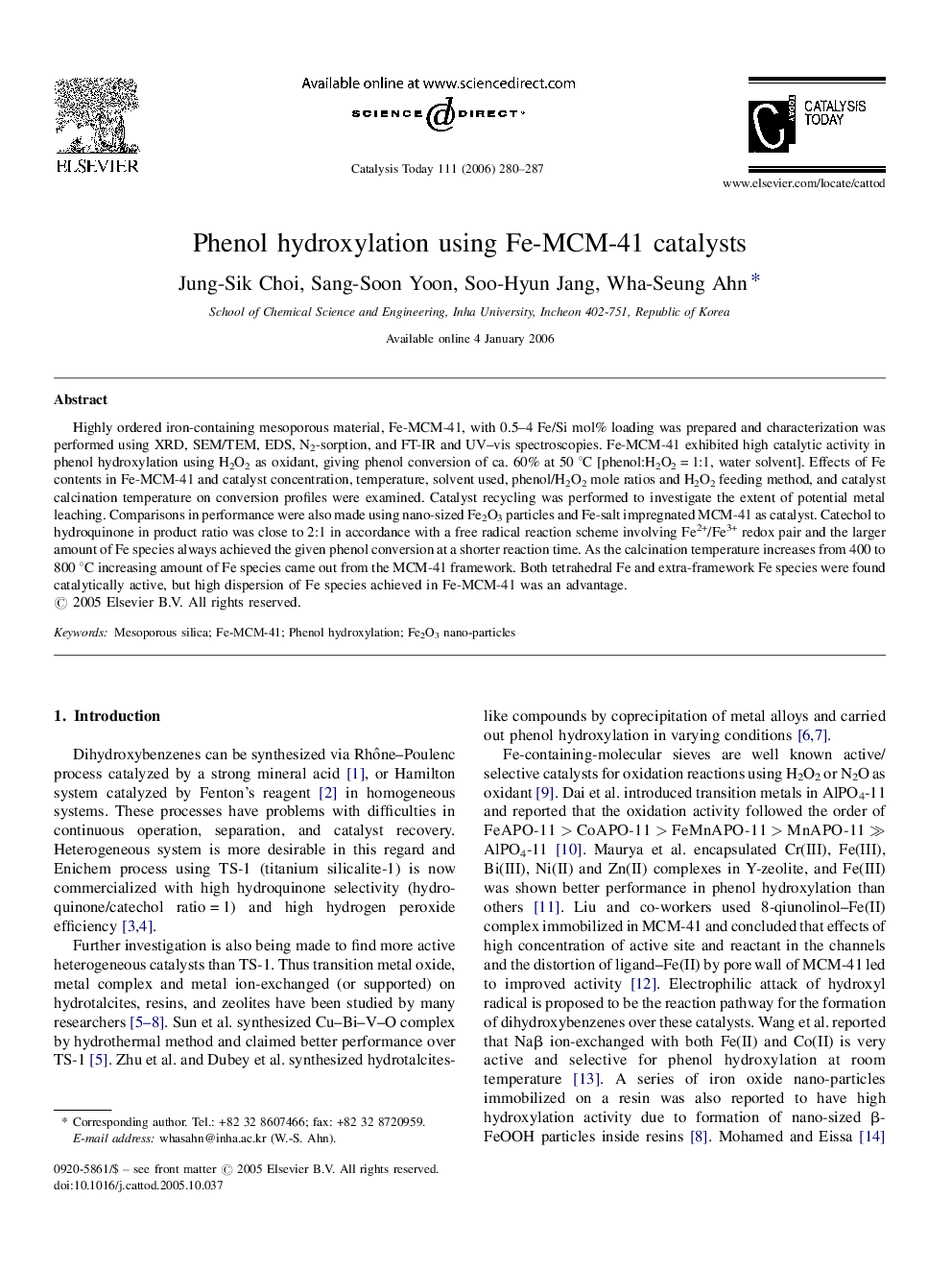| Article ID | Journal | Published Year | Pages | File Type |
|---|---|---|---|---|
| 58621 | Catalysis Today | 2006 | 8 Pages |
Highly ordered iron-containing mesoporous material, Fe-MCM-41, with 0.5–4 Fe/Si mol% loading was prepared and characterization was performed using XRD, SEM/TEM, EDS, N2-sorption, and FT-IR and UV–vis spectroscopies. Fe-MCM-41 exhibited high catalytic activity in phenol hydroxylation using H2O2 as oxidant, giving phenol conversion of ca. 60% at 50 °C [phenol:H2O2 = 1:1, water solvent]. Effects of Fe contents in Fe-MCM-41 and catalyst concentration, temperature, solvent used, phenol/H2O2 mole ratios and H2O2 feeding method, and catalyst calcination temperature on conversion profiles were examined. Catalyst recycling was performed to investigate the extent of potential metal leaching. Comparisons in performance were also made using nano-sized Fe2O3 particles and Fe-salt impregnated MCM-41 as catalyst. Catechol to hydroquinone in product ratio was close to 2:1 in accordance with a free radical reaction scheme involving Fe2+/Fe3+ redox pair and the larger amount of Fe species always achieved the given phenol conversion at a shorter reaction time. As the calcination temperature increases from 400 to 800 °C increasing amount of Fe species came out from the MCM-41 framework. Both tetrahedral Fe and extra-framework Fe species were found catalytically active, but high dispersion of Fe species achieved in Fe-MCM-41 was an advantage.
